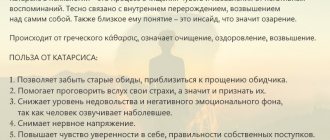The recent story with Almaty resident Galina Bochkareva, who insists on euthanasia because she considers herself a burden for her relatives, once again made me think: whether euthanasia should be allowed in Kazakhstan. And what should those who die from excruciating pain do, but are forced to endure them because no one in their homeland has the right to help them voluntarily die. Meanwhile, a terrible term has already taken root in the world - “suicide tourism”.
What is euthanasia?
Euthanasia is the artificial, painless termination of the life of a terminally ill person at his request, in order to save him from severe unbearable suffering.
You can understand what euthanasia means if you look at word formation. The word “euthanasia”, borrowed from Western European languages, is formed by combining two Greek words – “death” and “good”. Putting these two words together, we get “a good death.”
A painless, easy death at the request of the patient during euthanasia occurs with a deliberate action or inaction that ends a person’s life. In its literal sense, euthanasia is used out of pity, with the goal of putting an end to the “inhuman” suffering of one’s neighbor.
Among the people who died from euthanasia, there are many famous names. The famous Austrian psychologist Sigmund Freud committed euthanasia in 1939 after several dozen operations to remove an incurable oral tumor. Winner of the Nobel Prize in Physiology or Medicine (1974), Belgian scientist Christian de Duve died at the age of 96 as a result of euthanasia. According to the scientist, he was not very worried about what would happen to his soul after death, because during his lifetime he was an atheist.
Suicide tourism
You can obtain the right to assisted death only in a few states. In this regard, a service such as medical or suicide tourism has appeared. Seriously ill people who cannot undergo euthanasia in their own country come specifically for this purpose to places where it is permitted. So far, only Sweden and Zurich (Switzerland) officially accept “tourists”. There are clinics in these countries that provide this service to both local residents and foreigners.
The scientific publication Journal of Medical Ethics claims that over the past 5 years the number of foreigners who came to Zurich for an “easy death” has doubled. In May 2011, a referendum was held in which Zurich residents had to vote for or against the abolition of suicide tourism. 84.5% of respondents voted for euthanasia to remain legal.
What types of euthanasia are used in modern medicine?
Let's consider the types of euthanasia, their characteristics and features.
40 percent of all euthanasia is the result of a joint decision between the doctor and the patient to end life - with the help of drugs or by refusing treatment. Theoretically, there are two types of euthanasia - passive and active.
Active euthanasia
✔️ Active euthanasia is when a sick or dying person is given a medical drug in a dose that causes painless and rapid death. Active euthanasia is called the filled syringe method.
✔️ Active euthanasia can, in fact, be suicide under the supervision of a doctor, where the doctor acts as an assistant, or “merciful killing”, when the doctor, seeing how a person is suffering, injects him with an increased dose of painkiller. With active euthanasia, the doctor must obtain permission from relatives or the patient himself. Active euthanasia can also include suicide, when a patient commits suicide alone.
Passive euthanasia
✔️ Passive euthanasia is when medical care is stopped for a terminally ill person, which leads to an early natural death. This type of euthanasia is called the delayed syringe method.
There are also voluntary and involuntary euthanasia.
✔️ Voluntary euthanasia - carried out at the request of a sick, capable person. As an example, in the USA there is a practice when the patient signs a legal agreement in advance in the event of an irreversible situation (coma). Involuntary euthanasia is carried out without the consent of the patient (if he is unconscious), the decision is made by his relatives based on the consideration of alleviating a serious condition.
History of euthanasia
► The concept of euthanasia was introduced into scientific circles by an English philosopher and historian of the 16th-17th centuries. Francis Bacon. The entire scientific activity of the medieval scientist was based on popularizing the idea that science gives man power over nature. Francis Bacon wrote that it is a medical duty to alleviate the suffering of a patient when there is no hope of salvation, just as it is to restore health if there is hope of recovery.
► People have been using euthanasia since ancient times; the history of its origin goes back to the times of paganism, when among northern warriors it was considered a shame to end one’s days as a bedridden patient. There were practices when weak old people threw themselves down from a cliff. In ancient Sparta, children who were in poor health were killed... The Japanese took sick old people to die on a mountain, the name of which literally means “mountain for abandoning old people.” The ancient Eskimos had a custom when the sick and infirm left their homes and died in the cold tundra. Thus, people not only escaped pain and suffering, but also saved food for their community.
► But if many pagan communities encouraged the intentional death of sick and elderly members, then in the times of Ancient Greece only a government body sanctioned death; independent death was severely punished. Roman law prohibited suicide, while leaving justifiable reasons for voluntary death - grief, sorrow, illness.
► The ancient Greek physician and philosopher Hippocrates was categorically against the artificial killing of a patient. The oath in his name, which defines the ethics of behavior and the moral character of a doctor, includes words about the impossibility of helping and pointing out the path to the “death plan” of a sick person.
► After the foundations of modern religions were consolidated, the ban on all forms of suicide and euthanasia spread throughout the world. The basic religious tenet was that life is sacred and inviolable. Neither the doctor nor the patient dare to encroach on it.
► The Nazis actively resorted to euthanasia to exterminate “inferior” people during the Second World War. The seriously wounded, the disabled, people with mental illness, and representatives of sexual minorities were subjected to forced death.
► In 1987, the World Medical Assembly was held in Madrid, where they adopted the “Declaration on Euthanasia”. The Declaration called euthanasia “unethical,” and at the same time affirmed the need to treat the patient with respect and “not interfere” with the natural process of dying in the terminal phase of the disease.
► The history of the development of euthanasia is associated with the name of the American doctor Jack Kevorkian. They call him Doctor Death. In the mid-20th century, a doctor proposed using anesthesia for criminals sentenced to death to ease their suffering. Decades later, Doctor Death included an element of blackmail in the offer - administering anesthesia in exchange for allowing capital prisoners to use their organs after death.
Jack Kevorkian, photo: https://news.umich.edu
Since 1989, an American doctor put euthanasia on stream: a special device injected a strong dose of toxic and anesthetic devices into the body of terminally ill people. This went on for ten years, until one case of euthanasia was recognized as an act of murder, then Doctor Death was sentenced to a long prison term. However, after eight years, the doctor was released for exemplary behavior, but with a lifelong ban on communicating with any terminally ill or physically disabled person.
The figure of Dr. Kevorkian causes conflicting opinions. The creators of films and cartoons turn to his personality.
The Russian poet Vadim Filatov dedicated a poem to the American, which he called “Doctor Love”, it contains the following lines: “... Doctor Love - Jack Kevorkian, He took the spirit out of those who wanted. And now - Who will help you leave?..."
Of your own free will
Holland is a pioneer of euthanasia, and its experience is being studied by other countries that have decided to take this path. In 2001, she passed a law allowing doctors to perform euthanasia, that is, actively kill patients, and also assist in suicide by prescribing lethal doses of drugs. The Law on Termination of Life on Demand and Assistance in Suicide came into force on April 1, 2002.
The topic of euthanasia became one of the hottest in the Netherlands in the mid-70s of the last century - after the high-profile case of the doctor Gertrude Postma. In 1973, after repeated requests from her hopelessly ill mother, she gave her a lethal injection. Postma insisted that she be tried and tried to attract public attention to the trial. The punishment was symbolic: a suspended week in prison and another week of probation. In addition, experts, on behalf of the court, presented a list of conditions based on which a doctor could theoretically perform euthanasia.
Doctors and other interested parties have been working on the law on euthanasia for two decades. The bill was submitted to parliament by Health Minister Els Borst.
The doctor must be sure that the patient has made the decision to euthanasia voluntarily and deliberately, the motive is unbearable suffering and lack of hope for improvement, and the patient is fully informed about the prospects. The doctor is obliged to consult with at least one colleague, who must carefully examine the patient and issue a written report. The patient must be at least 12 years old. Parental consent is required for euthanasia of patients between 12 and 16 years of age.
For younger patients, euthanasia is not provided for by law. However, doctors, together with the prosecutor's office, developed the so-called Groningen Protocol, which contains criteria determining the possibility of euthanasia for children under 12 years of age.
The most common way of euthanasia in the Netherlands is by intravenous injection of sodium thiopental. After about a minute, coma sets in, after which pancuronium is administered, which causes respiratory arrest and death. Pentobarbital solution is less commonly used.
Over the course of a decade and a half, euthanasia has become commonplace in Holland. According to the New England Journal of Medicine, in 2015, the share of legalized euthanasia and suicide in the total death statistics in the Netherlands was almost 5% - 6091 cases.
In 2021, this figure will exceed 7,000. While in 2012, 4,188 Dutch people voluntarily died with the help of doctors - plus 67% over the past five years. In this regard, the director of the mentioned Levenseindekliniek (the only specialized medical institution in the kingdom that provides end-of-life care), Stephen Plater, declared that
The Dutch are accustomed to euthanasia and treat it as a routine medical procedure.
The sharp rise in the popularity of euthanasia began ten years ago, in 2007. According to Professor Theo Boyer, it took the Dutch five years to get used to the idea of organized death.
In 2021, the number of requests for euthanasia reached 18 thousand, taking into account approximately 2,500 requests to Levenseindekliniek (in 2015 there were half as many - 1,234). By the way, the procedure itself in the clinic located in the center of The Hague is free of charge. In 2012, the year of its opening, doctors performed 32 euthanasias, and in 2017 - about 720. In connection with such a rush, Stephen Plater announced a recruitment drive - he plans to double it by the end of 2021 (the clinic currently employs 57 doctors and nurses). A new service is also proposed - euthanasia at home.
“If there was any taboo about euthanasia, it has disappeared,” says Stephen Plater. “The post-war generation has a clearer and more articulate view of what the last moments of their lives should be like. I believe that the number of euthanasia will continue to increase.”
“Patients are now increasingly asking for euthanasia, and doctors are increasingly complying with their request,” says one of the consistent supporters of voluntary end of life, study leader Agnes van der Heijde, professor at the Erasmus University Medical Center, Rotterdam.
The study covers a period of a quarter of a century. In 1990, before legalization, euthanasia and assisted suicide accounted for 1.7% of deaths in the Netherlands. In 2010, the figure increased to 2.8%, in 2015 - to 4.5%. The vast majority of those who died in this way (92%) had very serious illnesses. The most common (87%) are cancer, fatal lung or heart problems, and diseases of the nervous system. The rest were tormented by various disorders caused by old age. More than a third of those who resorted to euthanasia were over 80 years old.
In 2010, the initiative group “By Will” was created in Holland, which began collecting signatures for a petition demanding changes to the law on euthanasia. According to enthusiasts, it should be allowed for all Dutch people over 75 years of age.
Which countries allow euthanasia?
In the modern world, euthanasia as a legal assisted death is legally possible in a number of countries.











